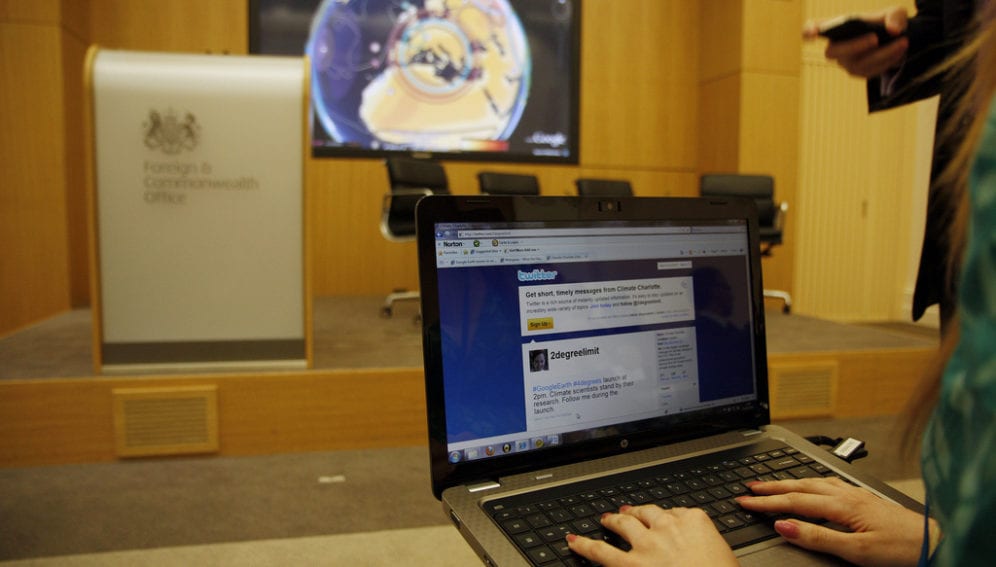By: Jennifer Rohn
Send to a friend
The details you provide on this page will not be used to send unsolicited email, and will not be sold to a 3rd party. See privacy policy.
The world needs scientists to bring science to life. Jennifer Rohn with tips on how researchers can use social media to engage new audiences.
Despite the central role science plays to our way of life, many people are not interested in science or don't understand how it works. Some choose not to believe science's findings. Others even feel it wastes taxpayers' money. Yet scientific solutions are increasingly crucial in overcoming threats to our future, be they climate change, emergent pandemics, dwindling natural resources or the struggle to maintain food security.
Scientists ignore 'the outside world' at their peril. The general public has the power to deny your funding or restrict your experiments. It's important to reach outside your laboratories, offices and field stations to engage with the wider world, to show people that science is essential and that researchers are working hard to help address important issues — that they are the good guys, not the enemy.
But scientists — even geographically isolated ones — now have a wide range of wonderful social media tools for making their voices heard. Thanks to today's communications technology, you can reach new audiences worldwide, keeping them informed, supportive and engaged.
Bringing science to life
Journalists and bloggers who can explain scientific breakthroughs are increasingly prolific. But less available, and just as important, are practising scientists who are willing to share the hows and whys of their world, making the way science works accessible, and showing why it is relevant.
Using social media, scientists like you can show how science is really done: a day in the life, the highs and lows, the set-backs, the uncertainties. You can showcase the scientific method in action and open up the sometimes hidden world of science by sharing the aspects that don't make it into published papers, such as negative results or easily made mistakes. You can express your excitement and show why your questions are worth solving (and worth taxpayers' support).
You can provide your own real-time take on controversial research in your field that is making the news and show that science is not black and white, that ideas evolve, and that disagreement between scientists does not undermine the legitimacy of a particular field.
You can show people the importance of not taking things at face value, perhaps making others more sceptical and savvy. You can draw people into your scientific world with your own passion and understanding.
Tools of the trade
Social media offers many ways to share your scientific life. Keeping a science blog — a regular, personal written account — is one way (read more about how to start a science blog here). Examples of entertaining scientist bloggers include Nina, a soil scientist in New Zealand, and Female Science Professor, an anonymous professor of physical sciences.
If your mobile phone is the easiest way to access the Internet, there are some good applications for instant blogging, for example Blogpress or Posterous. If you favour short, sharp updates on your research, Twitter might be for you, and could also be a good way to get involved in debate about other scientists' research if you wish.
Or you might prefer to use audio or video. Audioboo is a great mobile and web platform that helps you create and upload audio tracks. YouTube remains a great platform for sharing video, with several programs for mobile phones.
For example, Stephen Curry, a professor at Imperial College London in the United Kingdom, uses video to share his excitement about determining protein structures.
If you don't feel you have the skills to do this on your own, you might consider collaborating with a local filmmaker. Alom Shaha works with scientists in the United Kingdom, making short films about their work. This example looks at the work of Tara Shears, a physicist at the University of Liverpool who works with the Large Hadron Collider.
But if all this isn't for you, just maintaining a creative, up-to-date lab website can go a long way. Scientists' university pages are often static, dry, and technical, intended mostly for other scientists. But recently there have been more public-facing and creative web pages with simpler explanations and lots of photos.
You might even consider collaborating with colleagues in a particular field and making a super-site, like this French superconductivity website .
And more and more people are mixing up the various kinds of platforms. The superconductivity site has lots of amazing videos, of levitating objects for example, to draw people in. And lecturer Joanne Manaster'swebsite is part blog, part video diary, part scrapbook.
Whatever your medium, don't forget your audience. Write or speak clearly using plain language in a conversational tone, not technical terms. Real-life metaphors and analogies will help make your point.
You'll probably use your own language, and engage with people who speak it. But you might also broaden your approach with multiple languages. Have your webpage translated into other widely-used languages, give your video subtitles, or make your video universally understood by making verbal explanations unnecessary. The levitating objects video on the French superconductivity website inspired me with wonder and curiosity at the almost magical properties of the materials on display, even though I don't speak French.
The 'social' in social media
Your next step is to promote your thoughts, ideas and stories. At the moment, Twitter and to a lesser extent Facebook, are popular with scientists promoting their communication activities in the Western world, but Google+ is also starting to take off. Social media platforms Hi5, MXit and Orkut are more popular in the developing world and could be good places to start.
New sites crop up regularly, and others (such as MySpace) wane. So keep active on sites that are doing well.
Some websites may be unavailable. China does not allow its citizens to access Facebook, Twitter or YouTube (though there are apparently ways around some restrictions). So you will need to use whatever channels are available to you and take into account the technical difficulties you might face. Some tools may be easier to access in low Internet bandwidth situations than others, so trial runs can be useful.
Keeping things sociable
Increasingly, people get ideas about science primarily from the media, including social media in which science communicators, including scientists, are expected to engage with their audiences and interact with them.
All social media outlets let people leave comments or ratings. And interaction gives commenters a sense of belonging and helps build up a following. So try to be responsive.
Not all commenters will agree with you or one another. So enforce the rules of polite engagement. Tolerate differences of opinion, but not personal abuse — be fair but firm. If abuse persists, all social media sites allow you to ban or block abusive users — don't be afraid to use that power.
Remember, once online, material can last 'forever'. Search engines cache web pages, and screen-shot technology can capture pages before they are deleted. So think carefully about what you put out there.
Be legal. It is illegal in most countries to distribute falsehoods against another person or organisation in print (libel) or by voice (slander). Print includes the Internet, and any blog, website or tweet in English can be brought to court in England, regardless of what country it originated in. Having to defend a libel lawsuit could ruin your life, finances and reputation. If you're not sure you're reporting the truth, it may be better to leave some things out if they could be damaging to someone.
Be discreet. If you work in an active, popular field, don't reveal preliminary information that scientific competitors could exploit, possibly damaging your career or those of your researchers. Wait until publication is imminent, and never reveal your colleagues' research without their permission. Also, not everyone is comfortable appearing online. Never post photos, videos or audio of your colleagues without their permission.
Be aware. Science and politics are often linked. You might want to criticise your government's scientific or environmental policy, for example, but first consider whether you might endanger your funding, your position, your university — or your freedom. You must decide when and how to speak your mind.
Be sensitive. A topic that might be acceptable within your profession, for example sacrificing animals for research, might not be as acceptable to your audience. Consider the best way to phrase sensitive topics.
Be moderate. Social media can be mildly addictive. Use it a little bit each day. If you find it impairing your research time, scientific reputation or real-life social life, you're probably using it too much.
The most important thing is to be active.Science needs as many advocates as it can get, reaching out to the public across many kinds of media. So go on, give it a try. I hope to soon see many more scientists all over the world sharing their stories using the power of social media.
Jennifer Rohn is a cell biologist at the MRC Laboratory for Molecular Cell Biology at University College London, United Kingdom. She is the editor of LabLit.com and has written two novels about scientists. She blogs at Mind The Gap and tweets as @JennyRohn.
Are you a scientist in the developing world who uses social media to reach out to new audiences? If you have any suggestions for social networking sites for scientists, experiences you would like to share, or examples of scientists using social media in effective ways, please post them in our comments section below.














